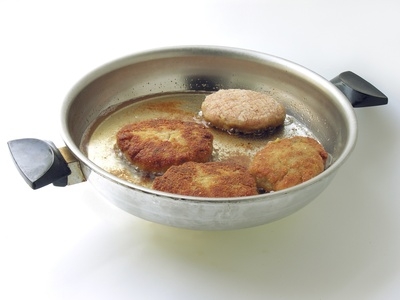
Biodiesel fuel can be made from vegetable oil, both new and used. It is made from the long-chain fatty acids within the oil. Using biodiesel is a cleaner, more environmentally friendly option than regular diesel and can be run in a regular diesel engine or a converted one. Making biodiesel from cooking oil at home can be done by anyone through a process called transesterification. Start with clean cooking oil to make a test bath and learn the process.
Quickly measure the lye into a plastic bag on the scale, and then close the bag. Do not allow the lye to remain exposed to the air for long, because it will absorb moisture. Measure the methanol and pour it into the 1/2-liter plastic container using a funnel. Use the other funnel to pour the lye into the plastic container, and then screw the cap on tightly. Swirl the mixture for about a minute at a time, five or six times, until the lye is completely dissolved in the methanol, creating methoxide. The solution will get hot. It should take between 10 and 30 minutes to completely dissolve.
Heat the oil to 130 F, and carefully pour into the blender. Carefully add the methoxide to the oil with the blender still turned off. Tightly replace the lid, and turn the blender on low. Mix for 20 to 30 minutes.
Pour the mixture into a 2-liter bottle and screw the cap on tightly. Allow the mixture to cool and settle for 12 to 24 hours. Once it is settled, there will be two distinct layers: the top lighter colored layer is the biodiesel, and the bottom darker layer is the glycerine byproduct. Carefully pour off the top layer of biodiesel into another 2-liter soda bottle, leaving the glycerine behind. You will have to let it settle again if glycerine mixes into the new bottle.
Test your fuel by putting 150 mL of biodiesel in a plastic soda bottle with 150 mL of water. Shake it well for 10 seconds, and then let it settle. If the mixture forms two distinct layers, with biodiesel on top and water on bottom, you have made quality fuel. If they stay mixed in a light yellow mousse, you will have to repeat the batch and probably need to measure your ingredients more closely.
Wash your biodiesel fuel by combining it with 1/2 liter of fresh water in a 2-liter bottle. Mix together and let them settle, just as in the wash test. Poke a small hole in the bottom of the bottle and allow water to drain out. Cover the hole with duct tape and repeat the process two or three more times until biodiesel is translucent.